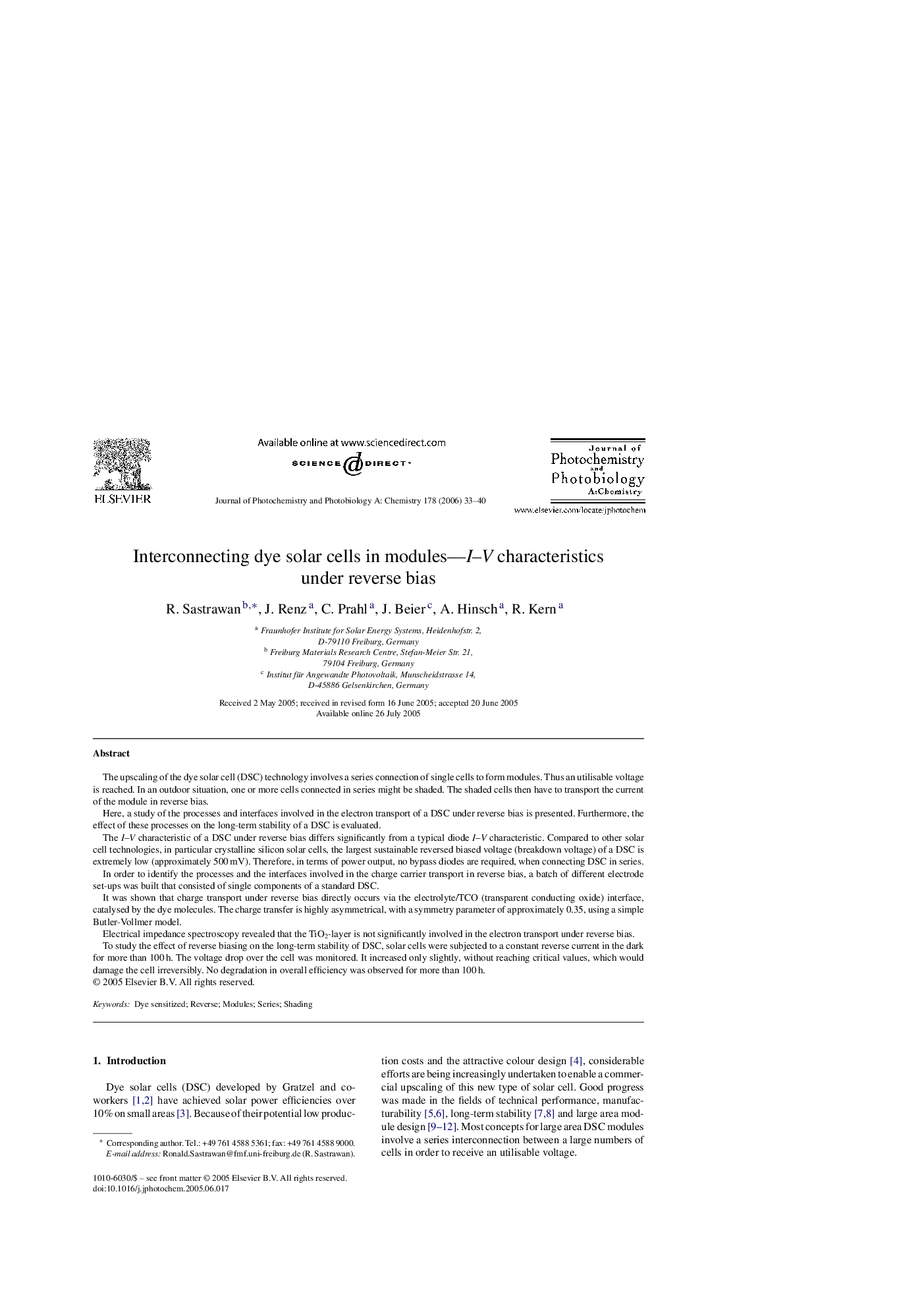| کد مقاله | کد نشریه | سال انتشار | مقاله انگلیسی | نسخه تمام متن |
|---|---|---|---|---|
| 28779 | 44091 | 2006 | 8 صفحه PDF | دانلود رایگان |

The upscaling of the dye solar cell (DSC) technology involves a series connection of single cells to form modules. Thus an utilisable voltage is reached. In an outdoor situation, one or more cells connected in series might be shaded. The shaded cells then have to transport the current of the module in reverse bias.Here, a study of the processes and interfaces involved in the electron transport of a DSC under reverse bias is presented. Furthermore, the effect of these processes on the long-term stability of a DSC is evaluated.The I–V characteristic of a DSC under reverse bias differs significantly from a typical diode I–V characteristic. Compared to other solar cell technologies, in particular crystalline silicon solar cells, the largest sustainable reversed biased voltage (breakdown voltage) of a DSC is extremely low (approximately 500 mV). Therefore, in terms of power output, no bypass diodes are required, when connecting DSC in series.In order to identify the processes and the interfaces involved in the charge carrier transport in reverse bias, a batch of different electrode set-ups was built that consisted of single components of a standard DSC.It was shown that charge transport under reverse bias directly occurs via the electrolyte/TCO (transparent conducting oxide) interface, catalysed by the dye molecules. The charge transfer is highly asymmetrical, with a symmetry parameter of approximately 0.35, using a simple Butler-Vollmer model.Electrical impedance spectroscopy revealed that the TiO2-layer is not significantly involved in the electron transport under reverse bias.To study the effect of reverse biasing on the long-term stability of DSC, solar cells were subjected to a constant reverse current in the dark for more than 100 h. The voltage drop over the cell was monitored. It increased only slightly, without reaching critical values, which would damage the cell irreversibly. No degradation in overall efficiency was observed for more than 100 h.
Journal: Journal of Photochemistry and Photobiology A: Chemistry - Volume 178, Issue 1, 20 February 2006, Pages 33–40